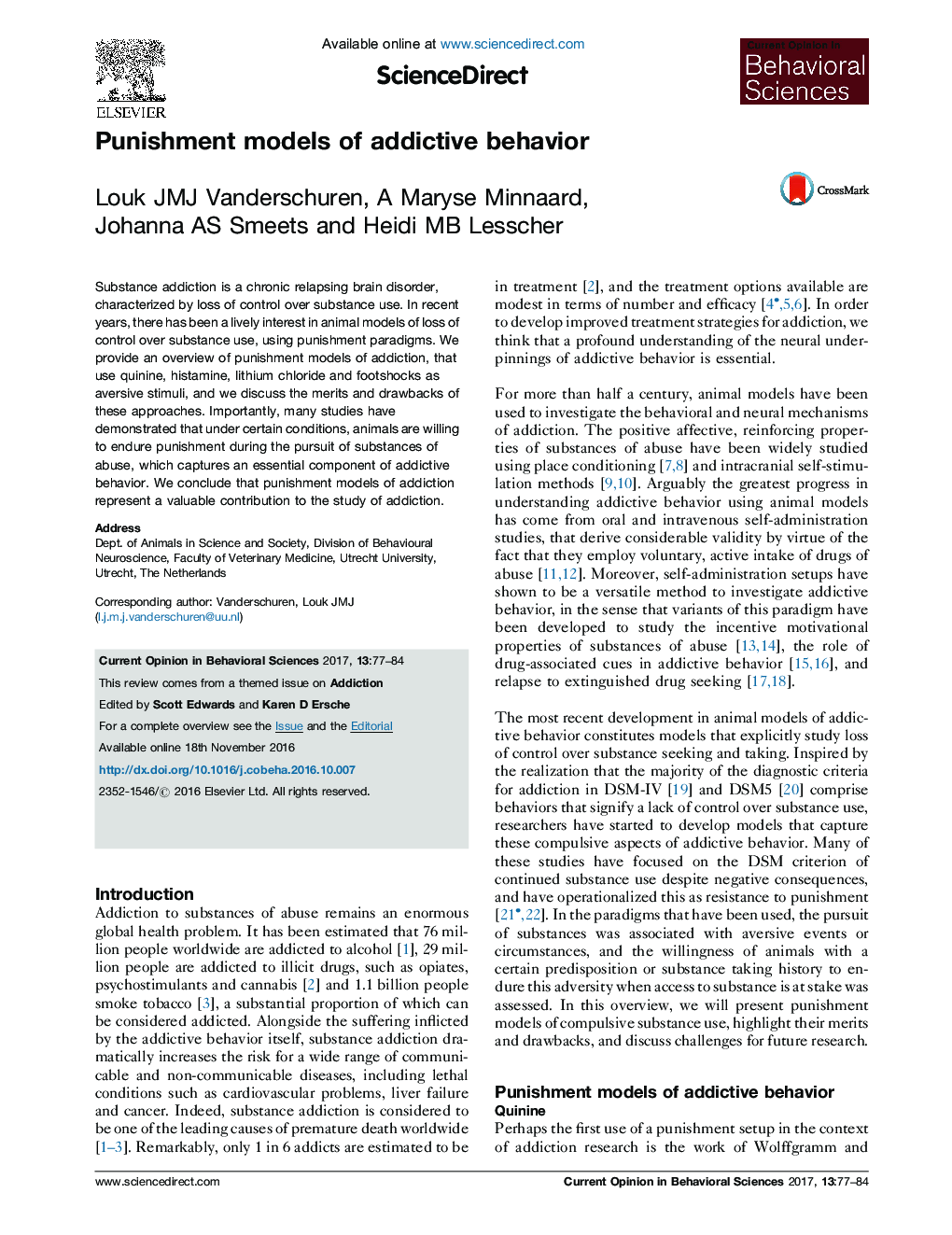| کد مقاله | کد نشریه | سال انتشار | مقاله انگلیسی | نسخه تمام متن |
|---|---|---|---|---|
| 6260310 | 1613077 | 2017 | 8 صفحه PDF | دانلود رایگان |
- Substance addiction is characterized by loss of control over substance use.
- Loss of control can be studied in animal models using punishment paradigms.
- Quinine, histamine, lithium chloride and footshocks are used as punishers.
- Resistance to punished substance use has been shown in animals.
- Punishment models are a valuable approach to study addictive behavior.
Substance addiction is a chronic relapsing brain disorder, characterized by loss of control over substance use. In recent years, there has been a lively interest in animal models of loss of control over substance use, using punishment paradigms. We provide an overview of punishment models of addiction, that use quinine, histamine, lithium chloride and footshocks as aversive stimuli, and we discuss the merits and drawbacks of these approaches. Importantly, many studies have demonstrated that under certain conditions, animals are willing to endure punishment during the pursuit of substances of abuse, which captures an essential component of addictive behavior. We conclude that punishment models of addiction represent a valuable contribution to the study of addiction.
Journal: Current Opinion in Behavioral Sciences - Volume 13, February 2017, Pages 77-84
